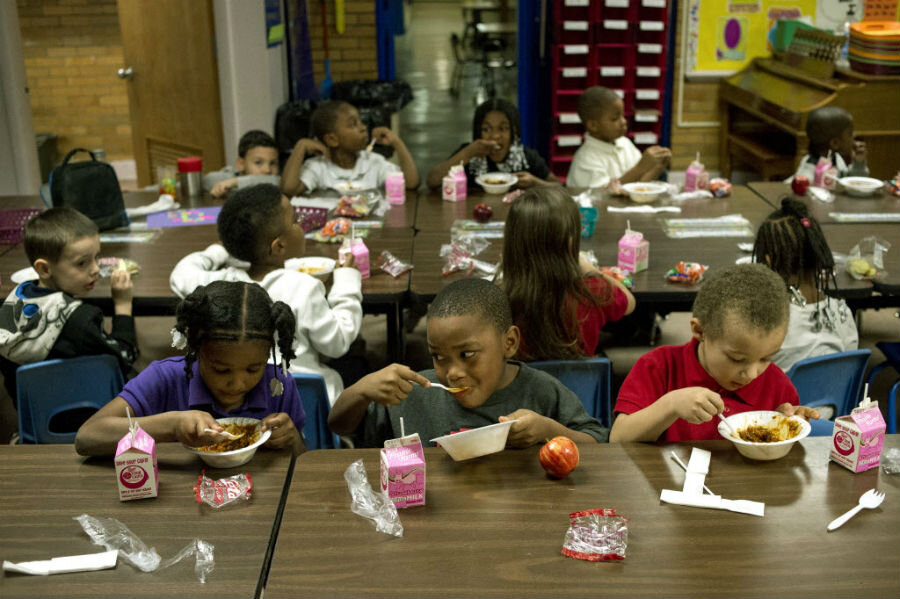Why 3 million school children will no longer receive antibiotic-laced chicken
Loading...
| Los Angeles
In a combined victory for natural food and childhood nutrition advocates, a coalition of six major urban school districts agreed Tuesday to weed antibiotic-laced chicken out of school cafeterias serving three million children.
Under the plan, agreed upon Tuesday, all chicken purchased by the six member school districts of the Urban School Food Alliance must be produced without antibiotics or animal byproducts in the feed. The diet must be all vegetarian and the chickens must be treated humanely.
The move comes at a time when schools around the country are wrestling with ways to enhance the nutritional value of school cafeteria offerings, leading to innovations from school gardens to salad bars featuring locally grown produce. At the same time, a growing whole food movement has spread from wealthy, liberal enclaves into mainstream America prompting, more Americans to pressure food makers to provide more naturally raised meat.
The Urban School Food Alliance, a collective representing school districts in Los Angeles, Miami, Orlando, Chicago, Dallas, and New York, joined forces in 2012 to adopt eco-friendly practices and leverage the collective purchasing power of some of the biggest school districts in the nation.
“We want chicken that has been raised on a non-animal diet,” says Dennis Barrett, executive director of SchoolFood at the New York City Department of Education. “And we want no antibiotics ever.”
Mr. Barrett and food directors from the five other member schools worked to develop the new standard with the help of the Natural Resource Defense Council, a New York-based environmental organization that has lobbied for tighter regulation of the use of antibiotics in livestock production.
Mark Izeman, a food and agriculture attorney for NRDC, hopes the alliance’s demand for antibiotic-free chicken will create a financial incentive for food makers to produce more natural food for other school districts as well.
“This is a big deal,” Mr. Izeman writes in an NRDC blog. “These six large cities are pushing the entire food industry to move away from animals raised with excessive antibiotic use.”
He and others raise the key point that more than two-thirds of the students in these school districts are economically disadvantaged and school meals often represent more than half of the food they consume each day.
The importance of delivering healthy food to disadvantaged communities – especially children – has been a major focus of Michelle Obama’s healthy schools campaign. However, the first lady’s campaign to increase the number of vegetables and other healthy food in school lunches has been met with criticism from libertarian-minded adults and vegetable-averse children.
Improving food offerings in cafeterias does little good if students refuse to eat the food, Peter Zaleski, an economics professor at Villanova School of Business in Pennsylvania, says pointing to a recent study in New York shows that 86 percent of school children do not even touch their vegetables.
“As a nation, we are devoting a lot of resources to getting healthy food into our schools,” says Mr. Zaleski. “The problem is that we are not doing so efficiently.”
However, child nutrition advocates see institutional efforts to improve the nutritional value of school meals as a worthy effort that will pay off in the long run, even if it takes some time for habitual change to occur.
“This move is an example of how the food system and the industry has to be changed at the ground level as opposed to encouraging individuals to eat healthier,” says Rebecca Shenkman, interim director of the Villanova College of Nursing’s MacDonald Center for Obesity Prevention and Education. “It’s a great idea to provide a more healthful option to begin with because it removes the wrong option at the outset.”
Monitor contributor Eva Fedderly contributed to this report.







